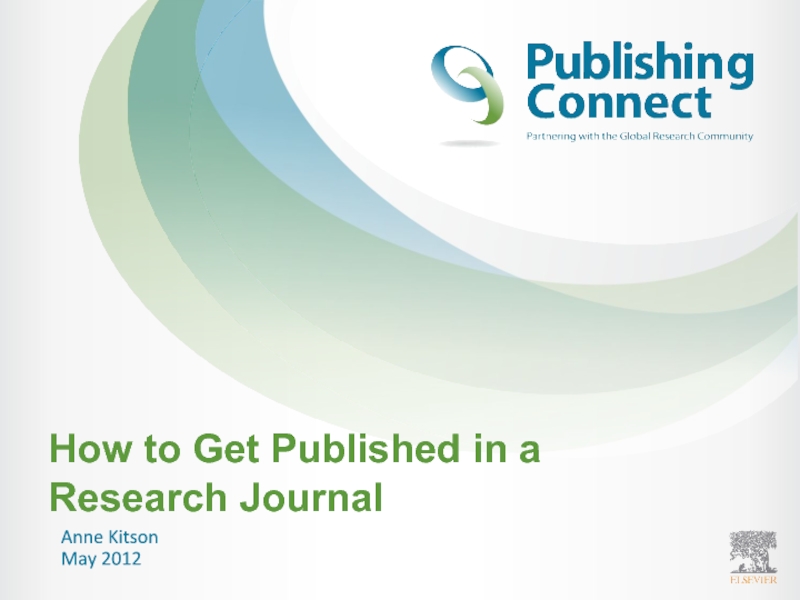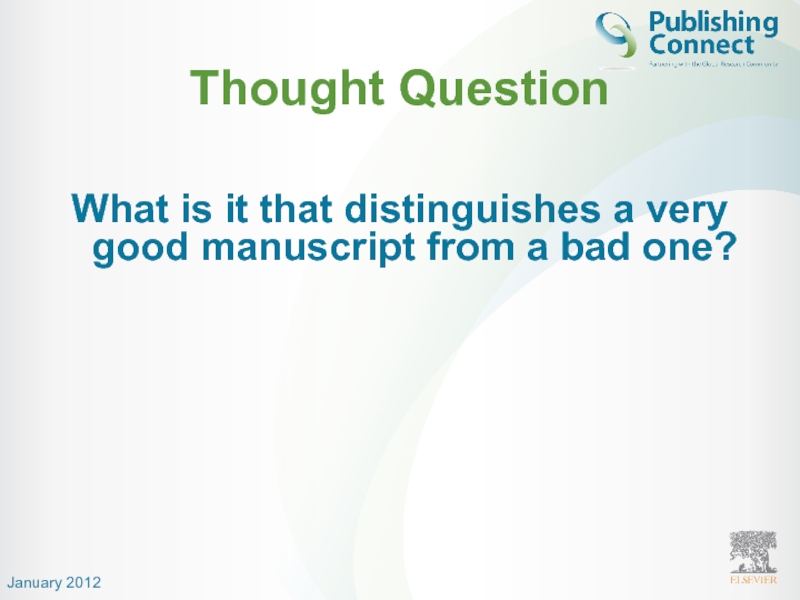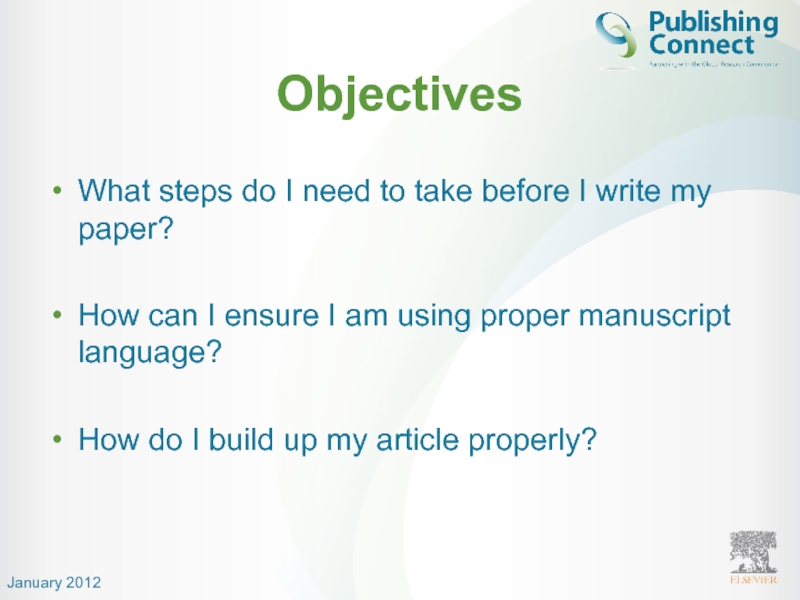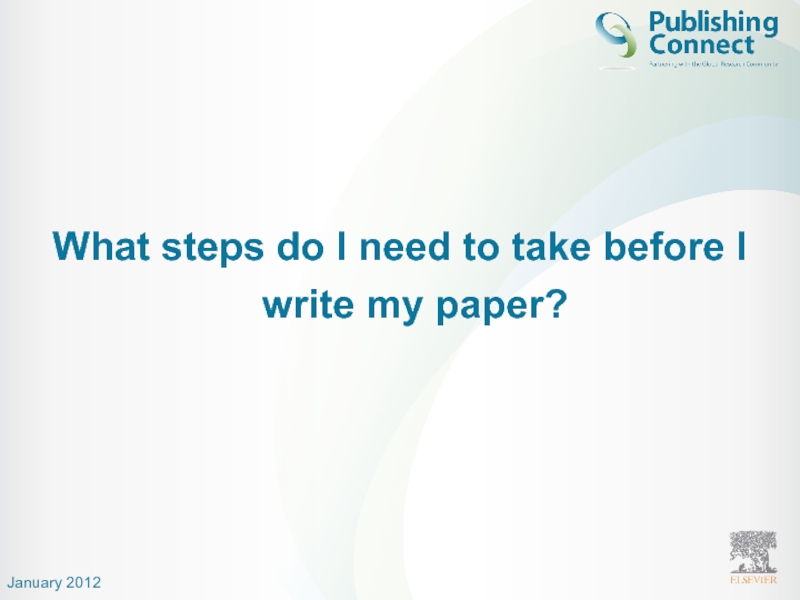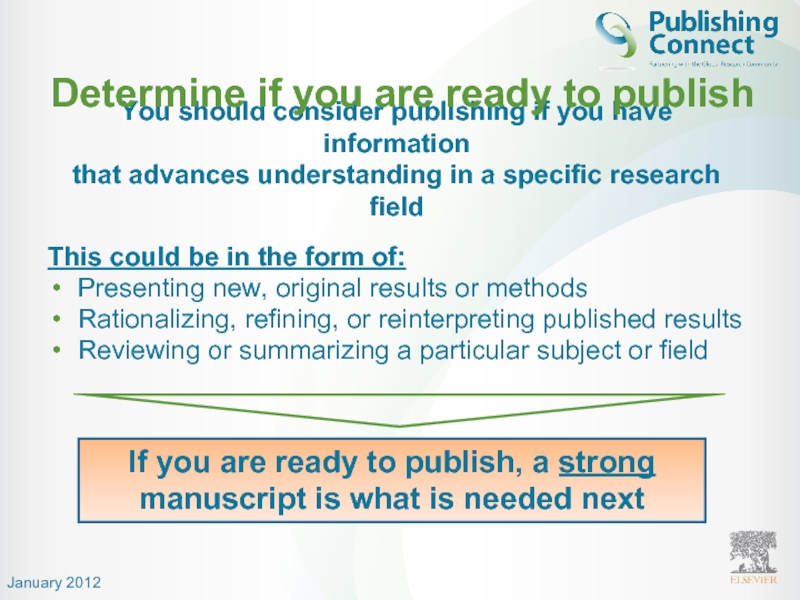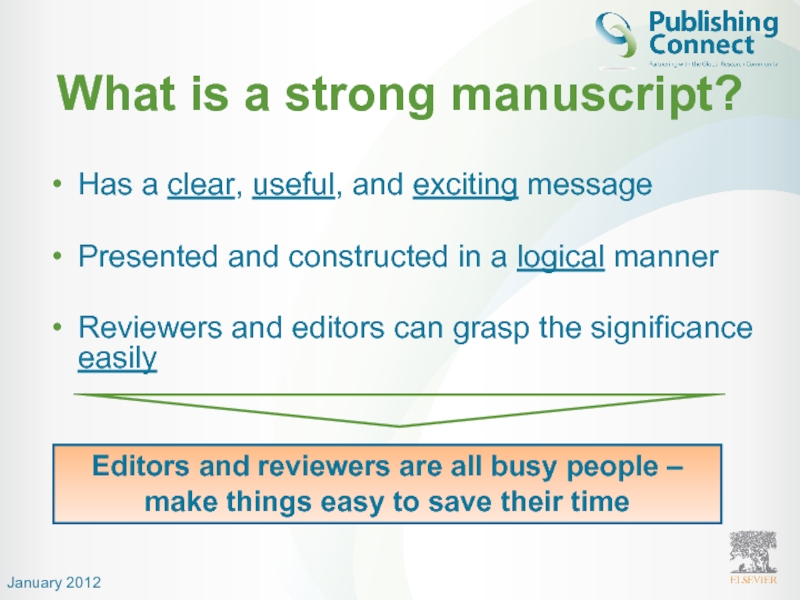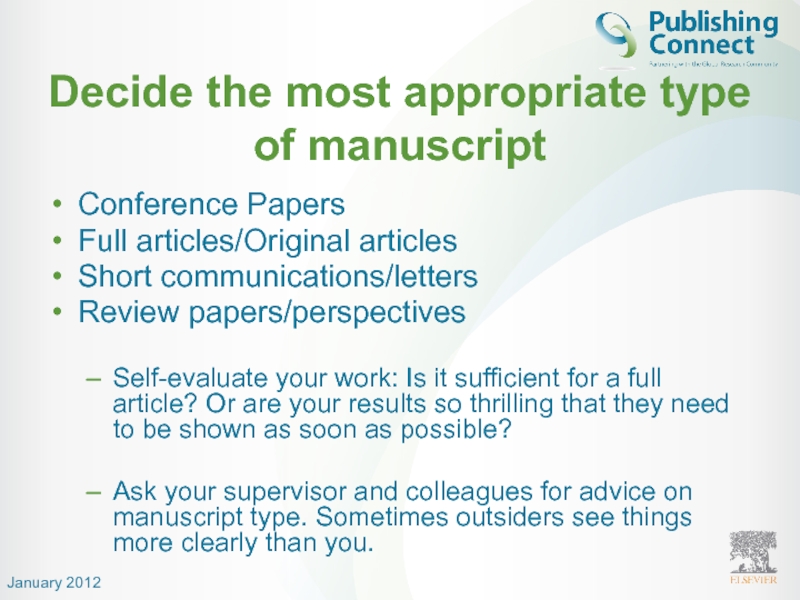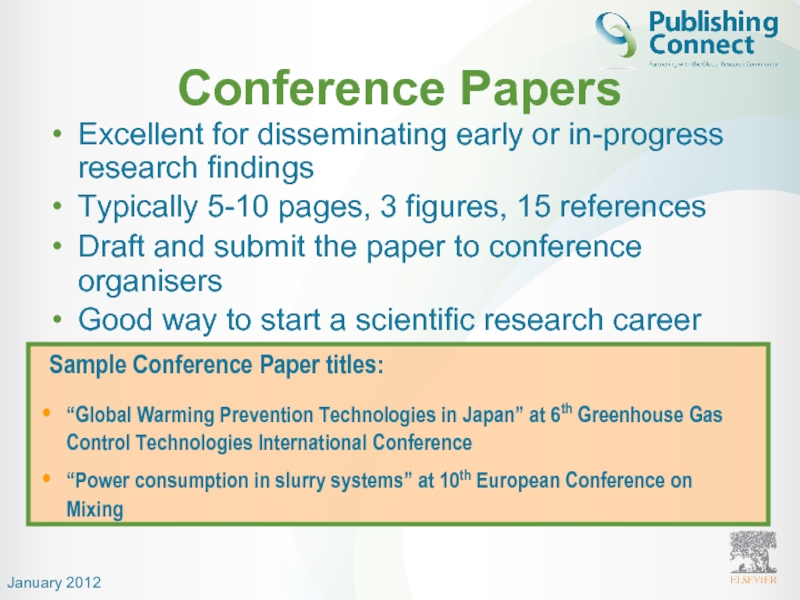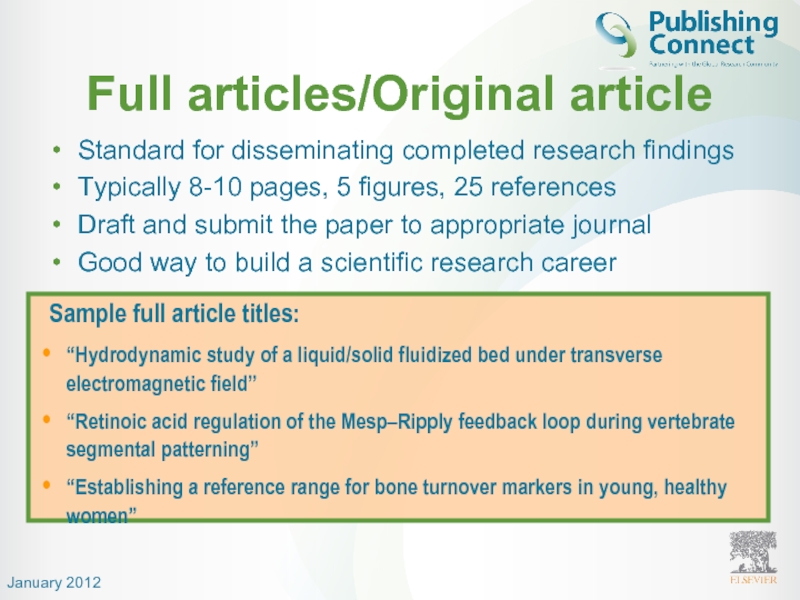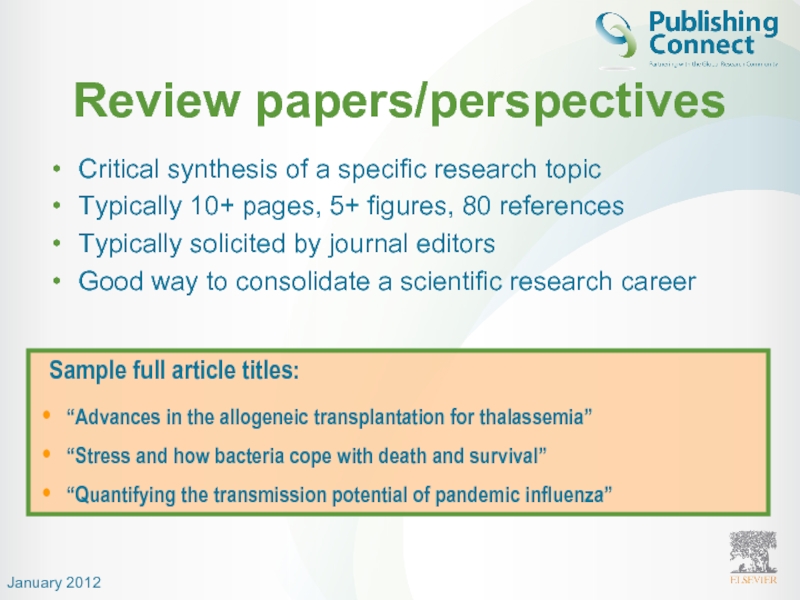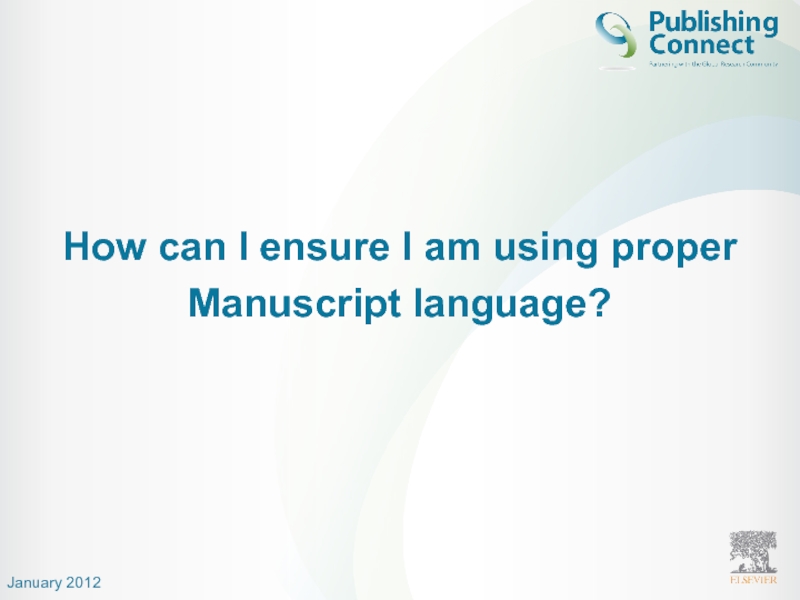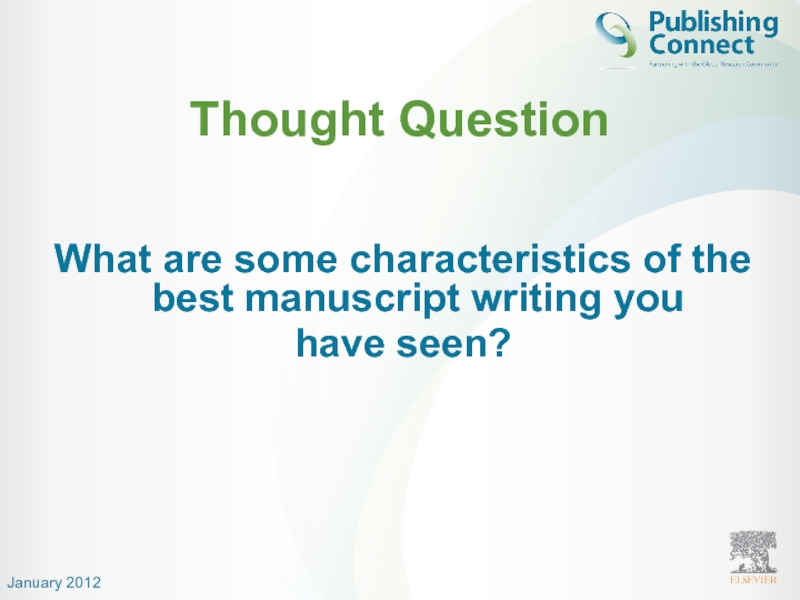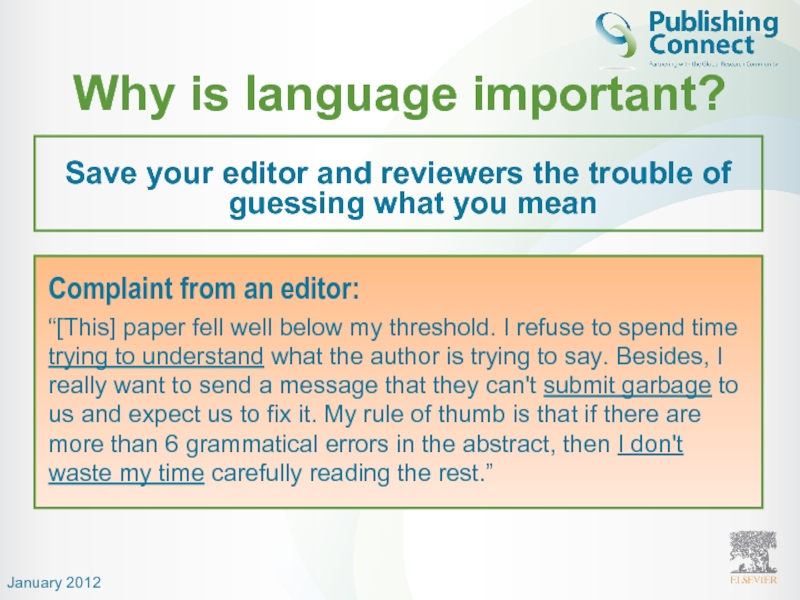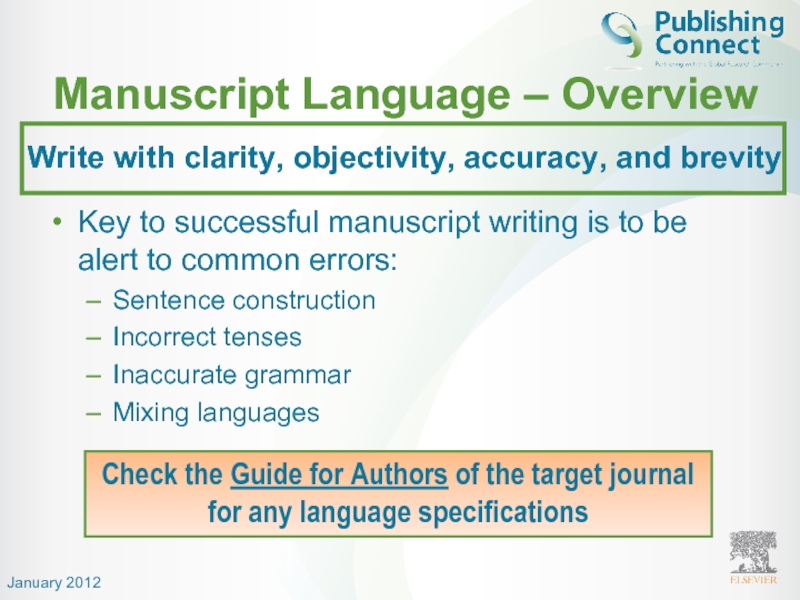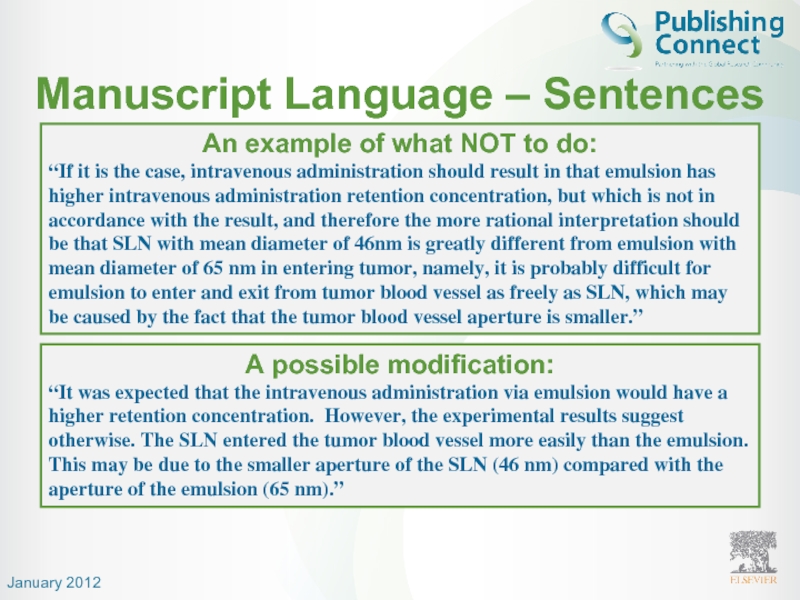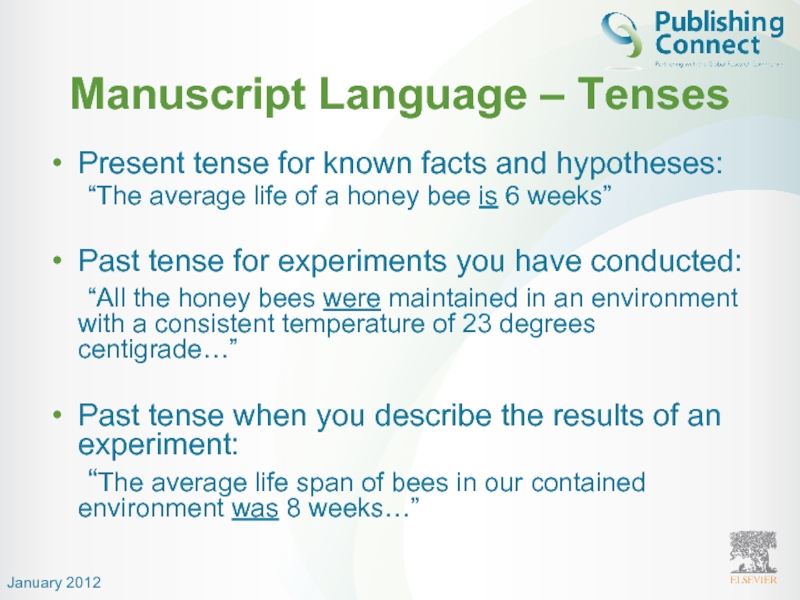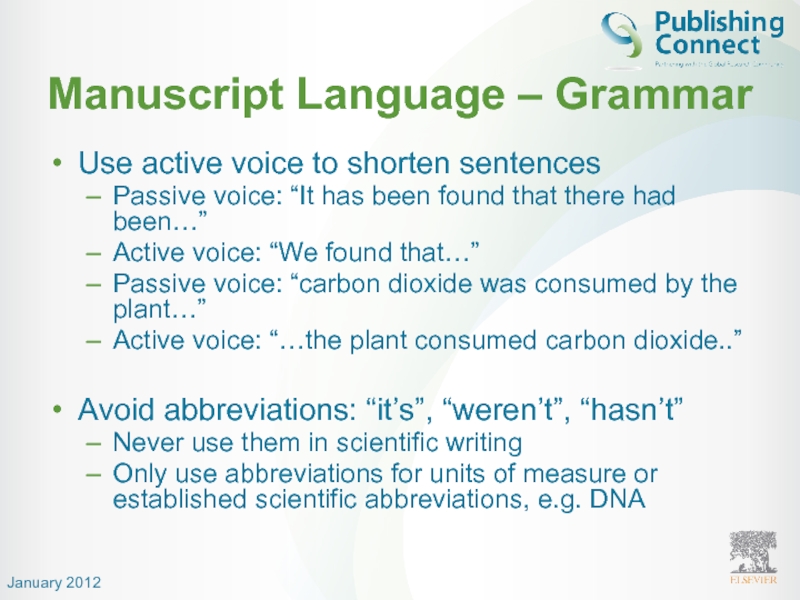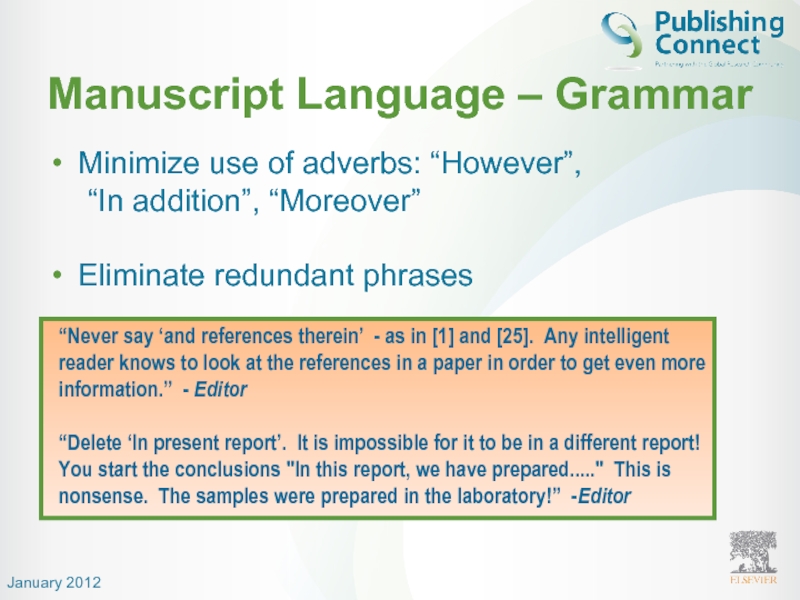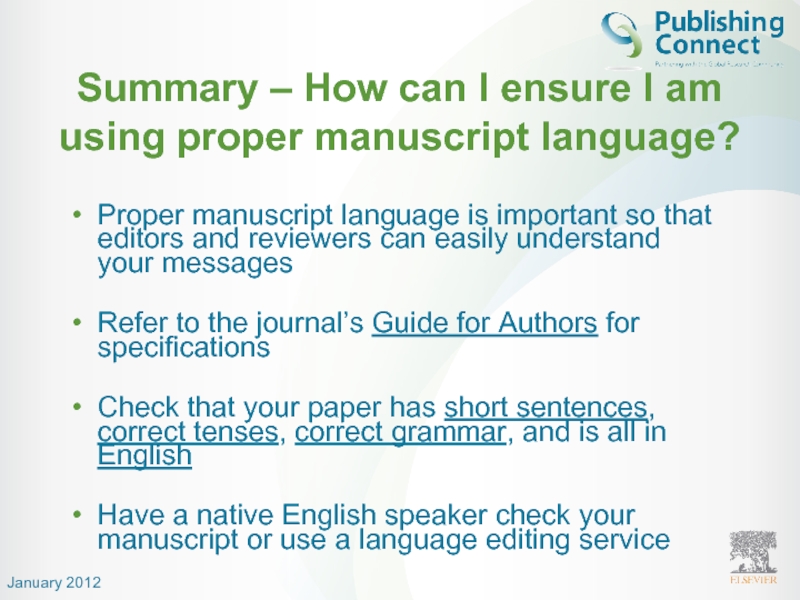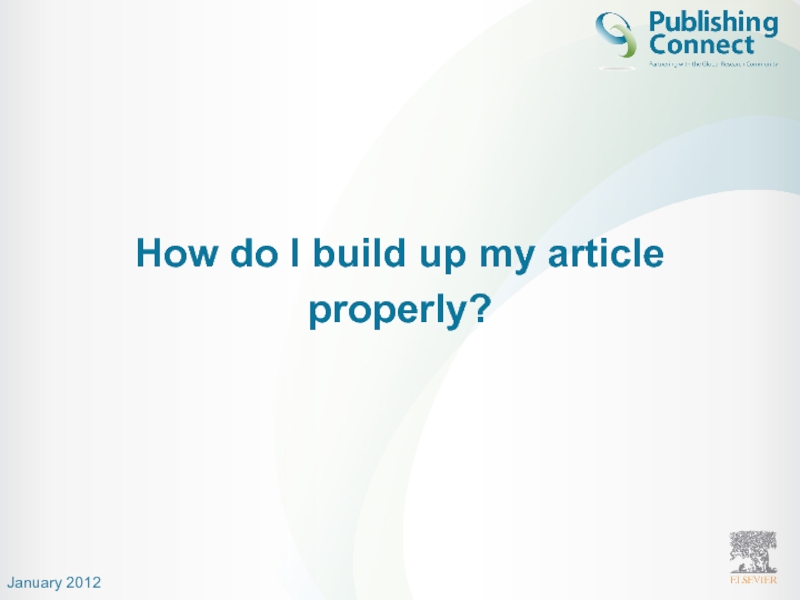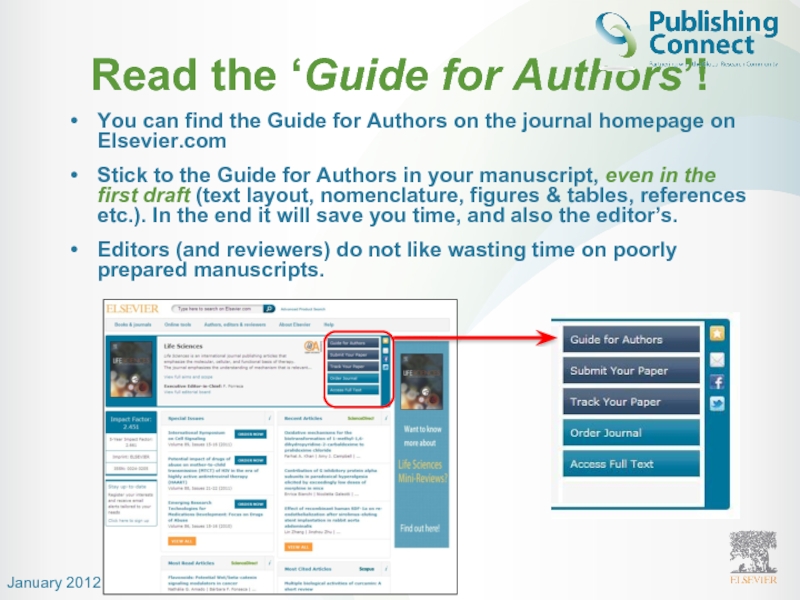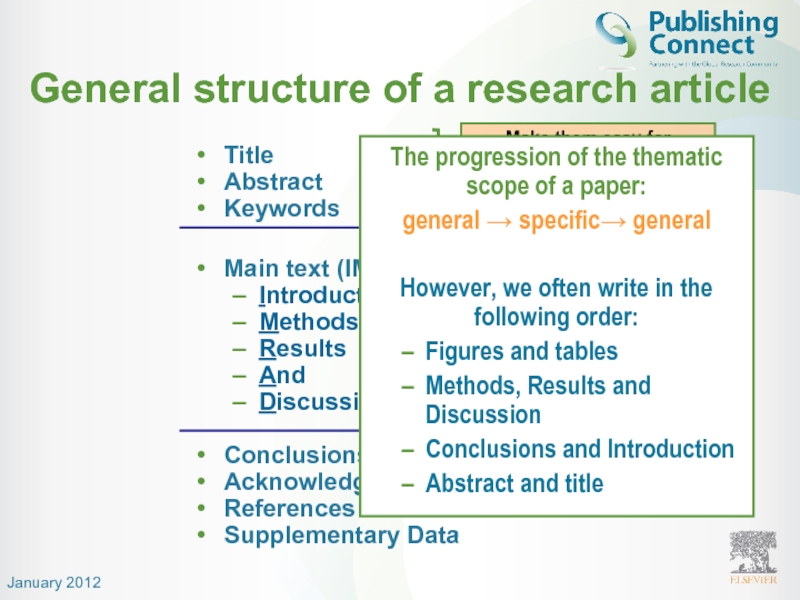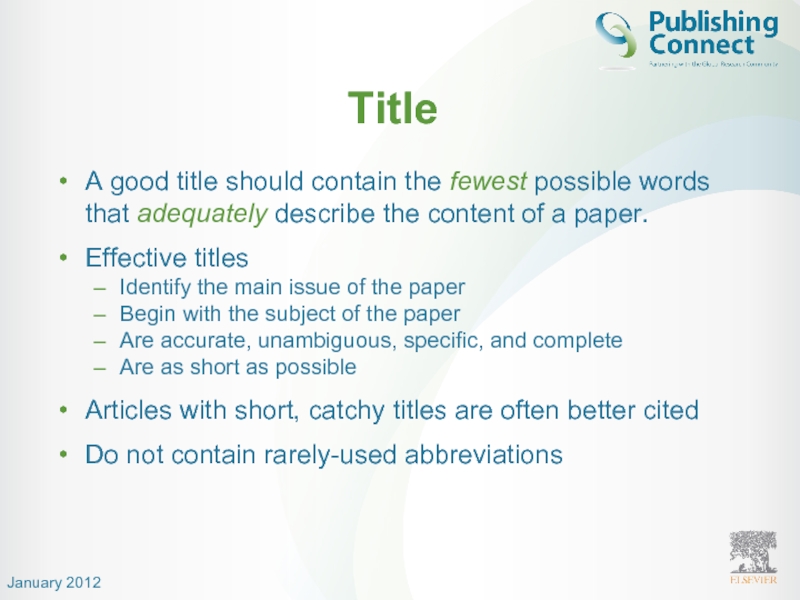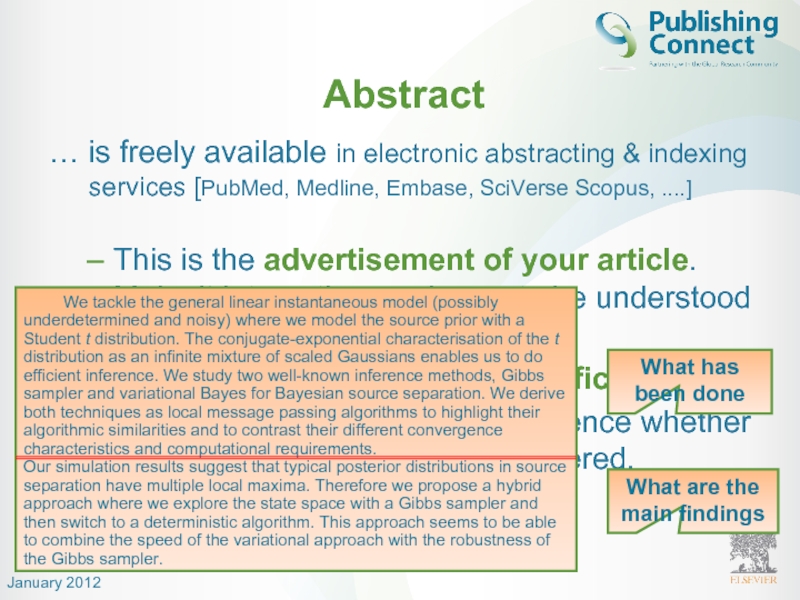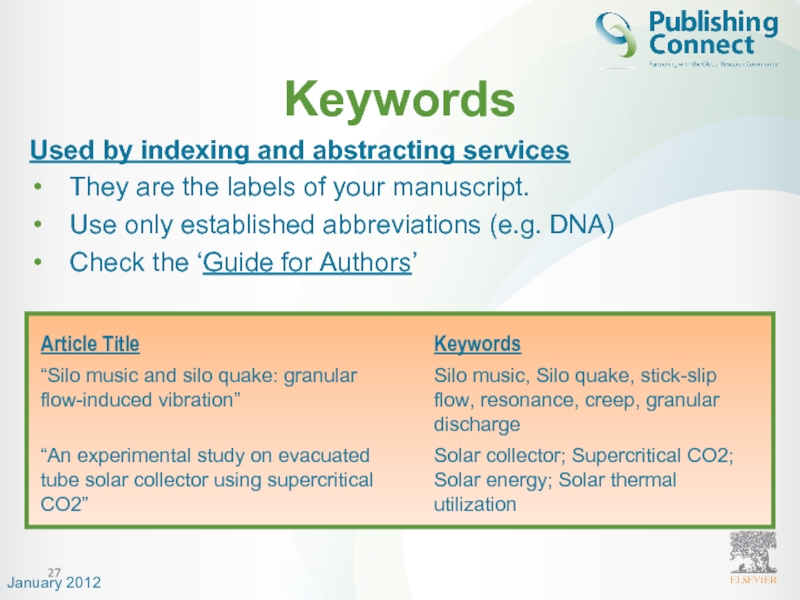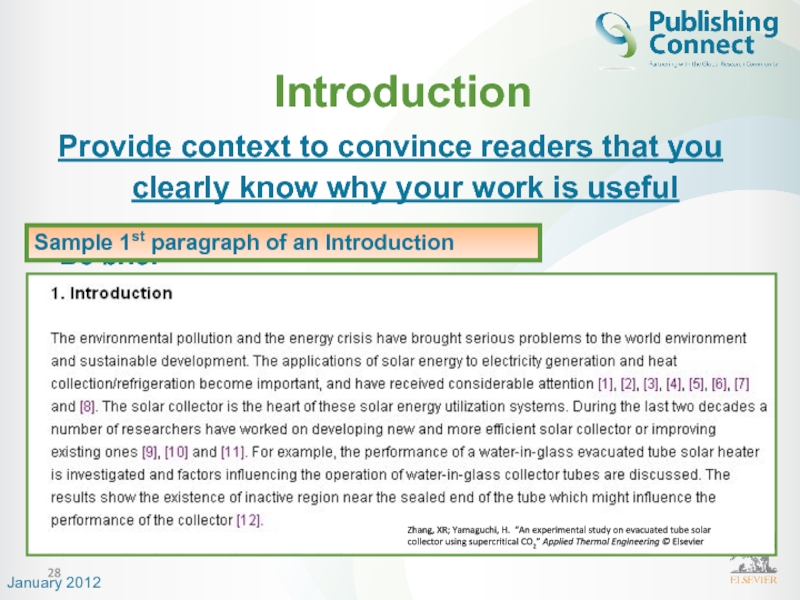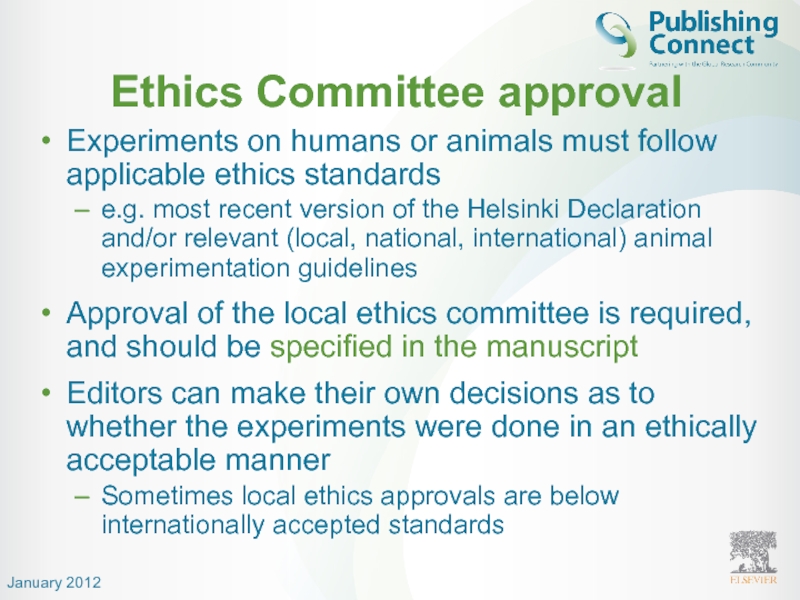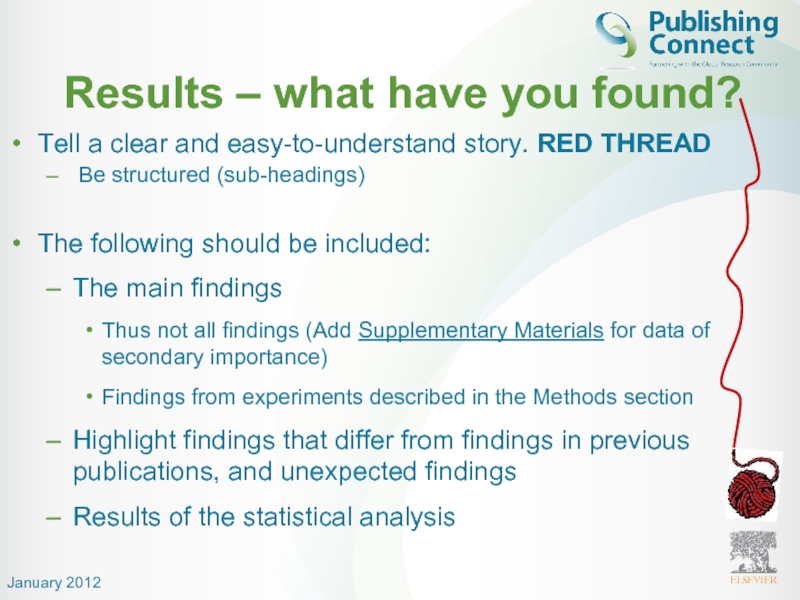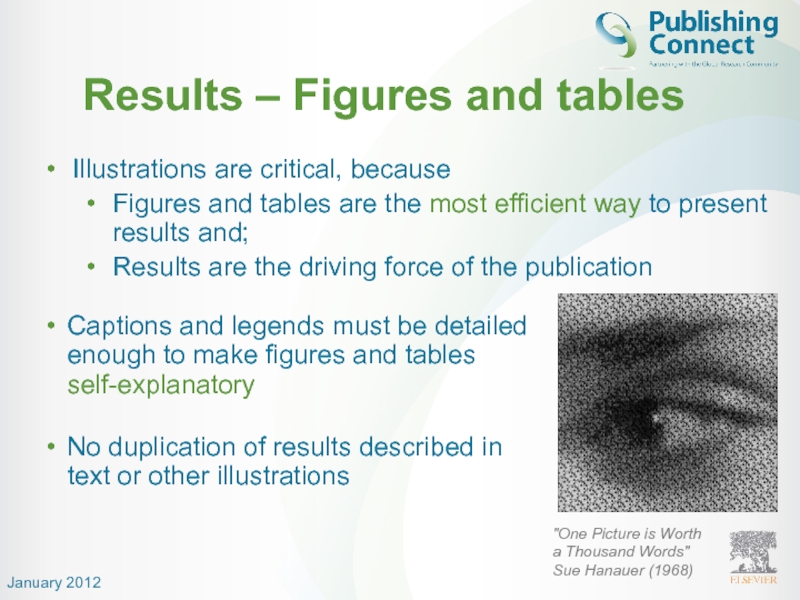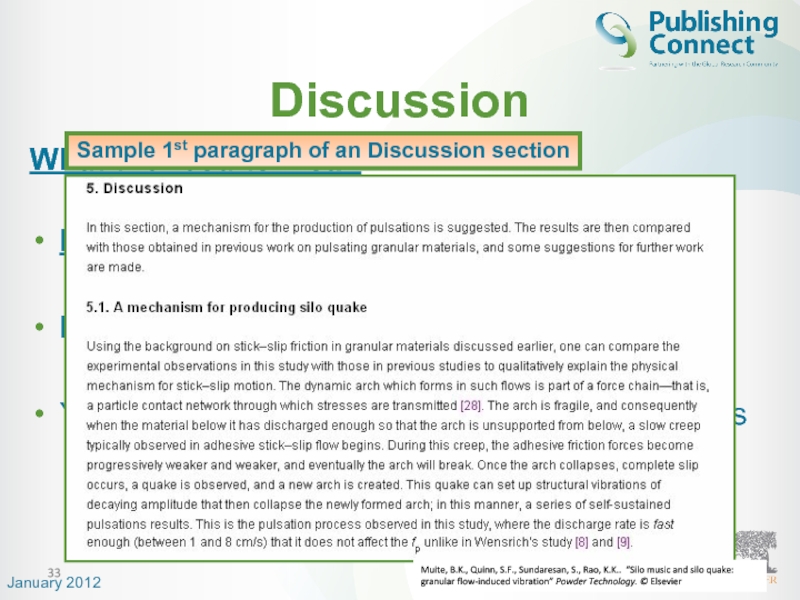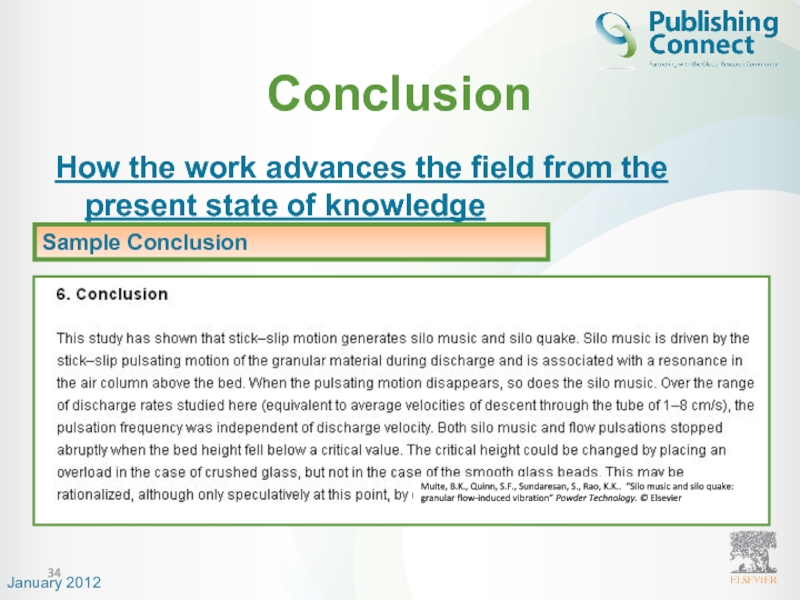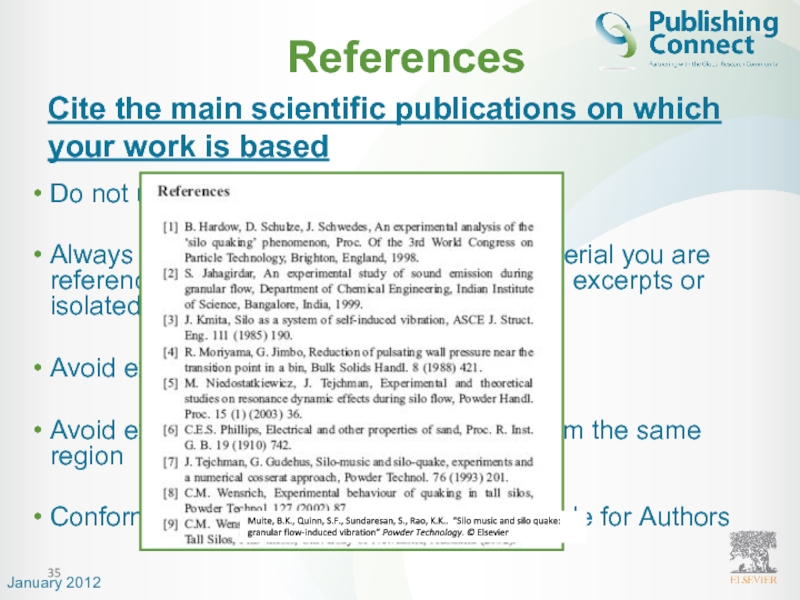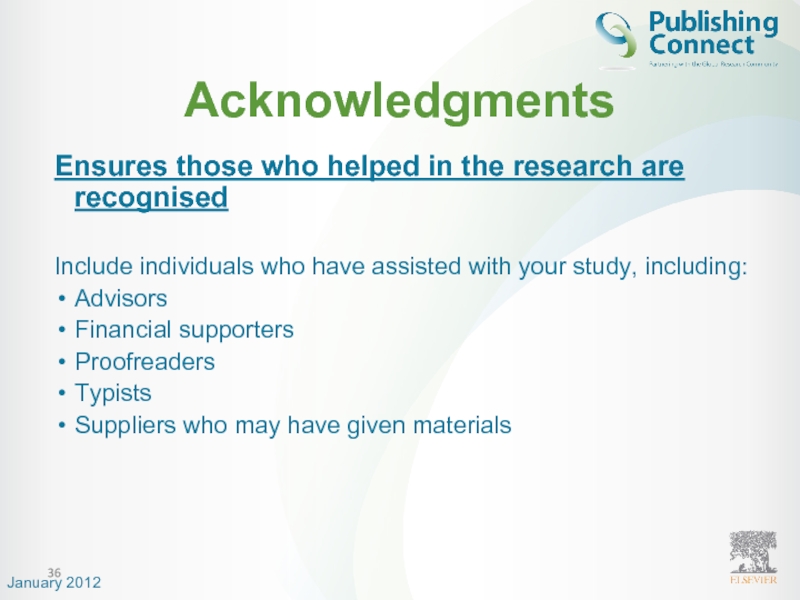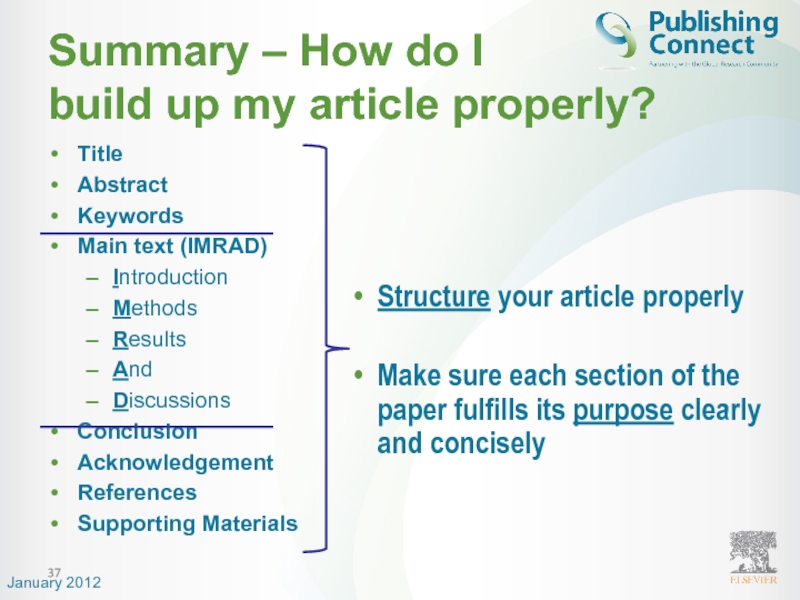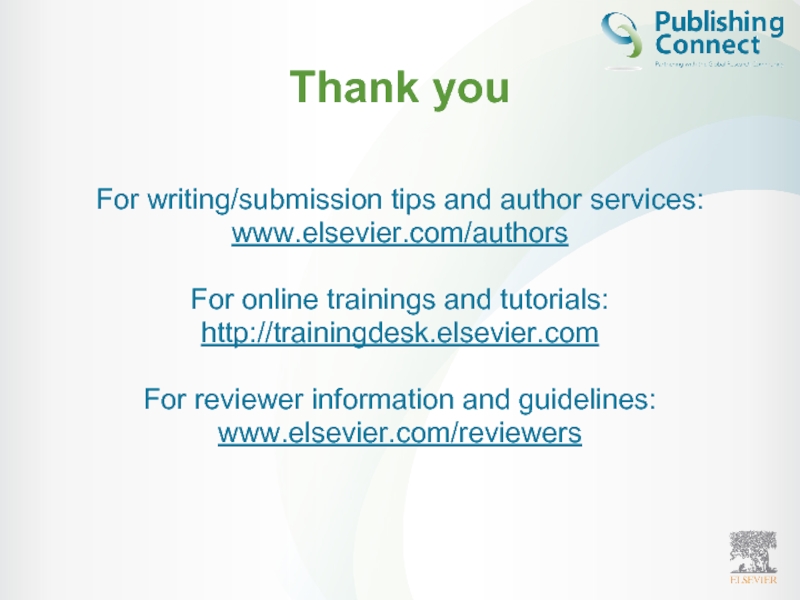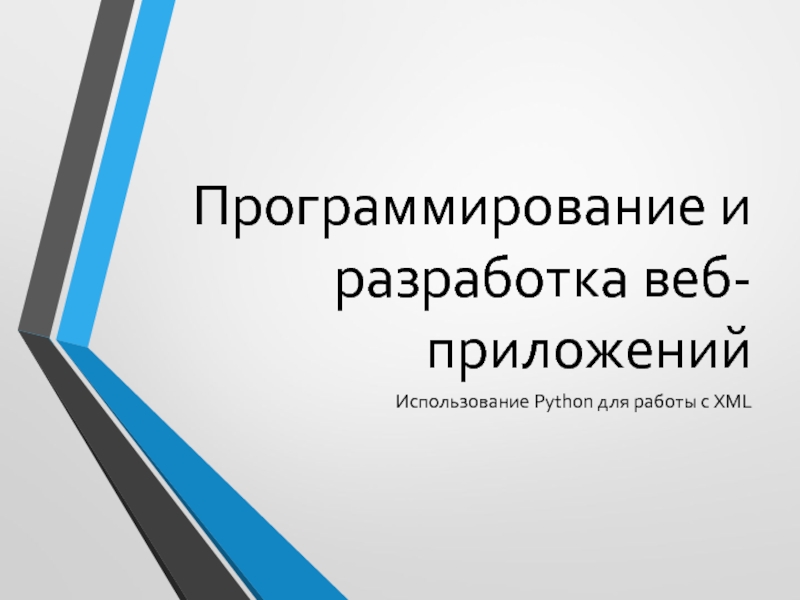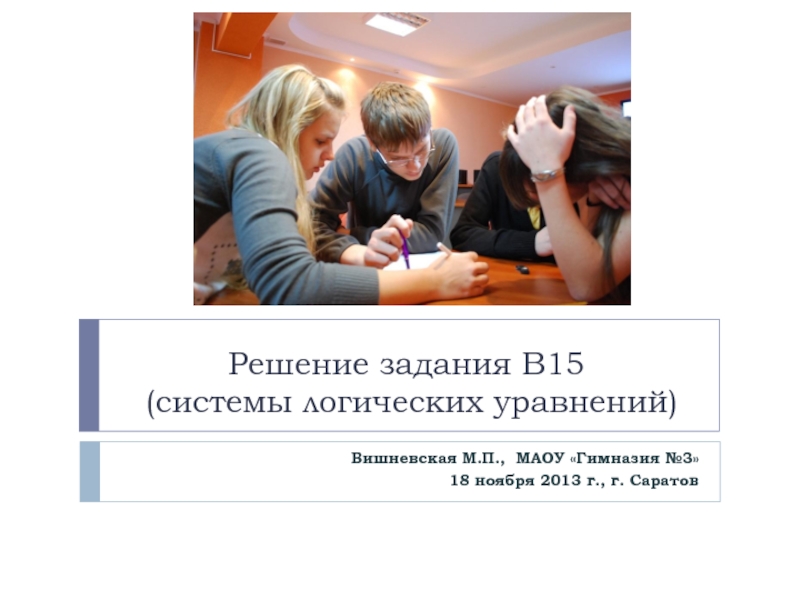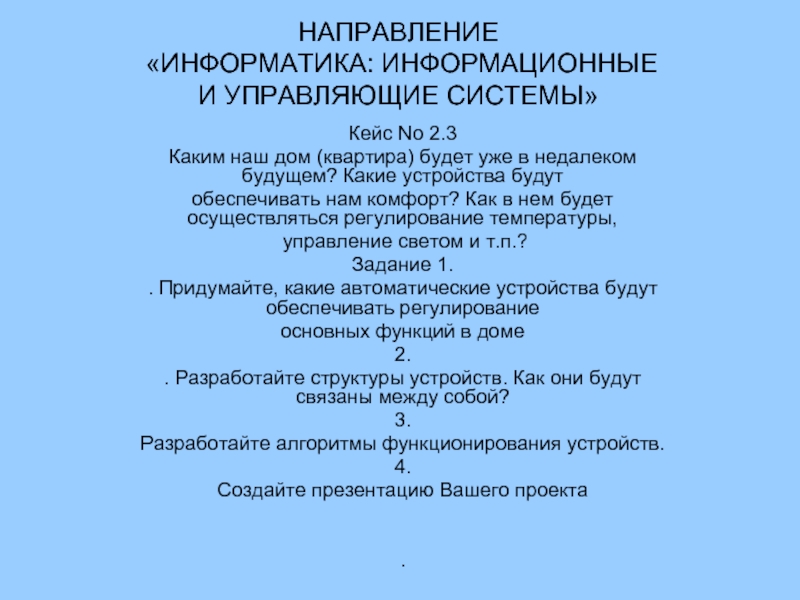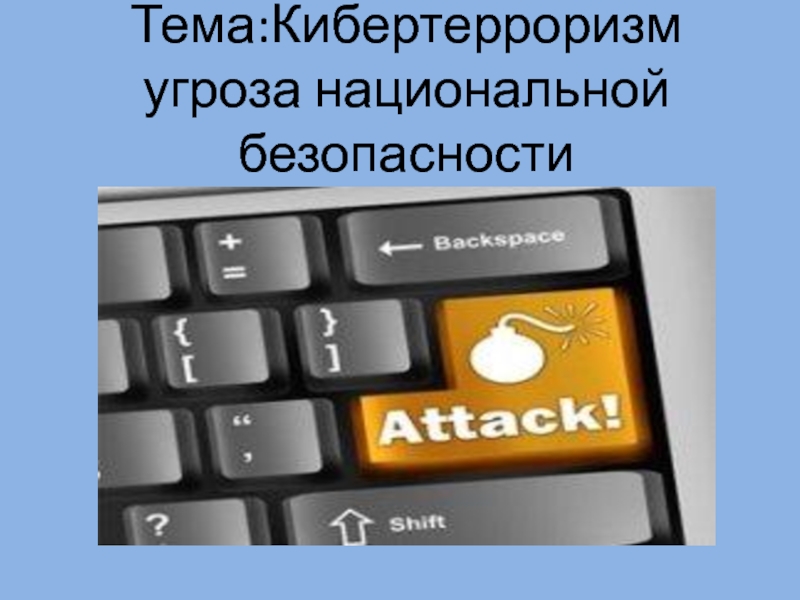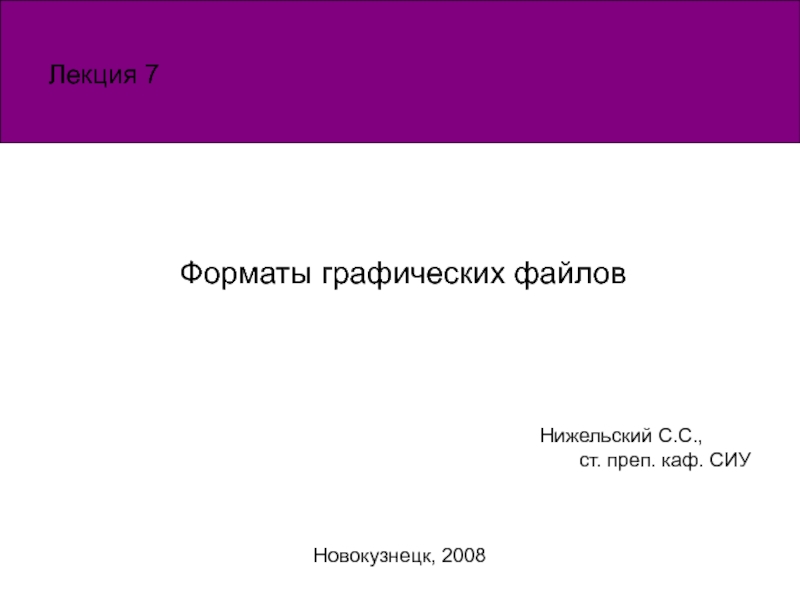- Главная
- Разное
- Дизайн
- Бизнес и предпринимательство
- Аналитика
- Образование
- Развлечения
- Красота и здоровье
- Финансы
- Государство
- Путешествия
- Спорт
- Недвижимость
- Армия
- Графика
- Культурология
- Еда и кулинария
- Лингвистика
- Английский язык
- Астрономия
- Алгебра
- Биология
- География
- Детские презентации
- Информатика
- История
- Литература
- Маркетинг
- Математика
- Медицина
- Менеджмент
- Музыка
- МХК
- Немецкий язык
- ОБЖ
- Обществознание
- Окружающий мир
- Педагогика
- Русский язык
- Технология
- Физика
- Философия
- Химия
- Шаблоны, картинки для презентаций
- Экология
- Экономика
- Юриспруденция
How to Get Published in a Research Journal презентация
Содержание
- 1. How to Get Published in a Research Journal
- 2. Thought Question What is it that distinguishes
- 3. Objectives What steps do I need to
- 4. What steps do I need to take before I write my paper? January 2012
- 5. You should consider publishing if you have
- 6. What is a strong manuscript? Has a
- 7. Decide the most appropriate type of manuscript
- 8. Conference Papers Excellent for disseminating early or
- 9. Full articles/Original article Standard for disseminating completed
- 10. Short Communications Articles Quick and early communications
- 11. Review papers/perspectives Critical synthesis of a specific
- 12. How can I ensure I am using proper Manuscript language? January 2012
- 13. Thought Question What are some characteristics of
- 14. Why is language important? Save your editor
- 15. Write with clarity, objectivity, accuracy, and
- 16. Manuscript Language – Sentences Write direct and
- 17. Manuscript Language – Tenses Present tense for
- 18. Manuscript Language – Grammar Use active voice
- 19. Manuscript Language – Grammar Minimize use of
- 20. Summary – How can I ensure I
- 21. How do I build up my article properly? January 2012
- 22. Read the ‘Guide for Authors’! You can
- 23. General structure of a research article Title
- 24. Title A good title should
- 25. Title January 2012
- 26. Abstract … is freely available in electronic
- 27. Keywords Used by indexing and abstracting services
- 28. Introduction Provide context to convince readers that
- 29. Describe how the problem was studied
- 30. Ethics Committee approval Experiments on humans or
- 31. Results – what have you found? Tell
- 32. "One Picture is Worth a Thousand Words"
- 33. Discussion What the results mean Most
- 34. Conclusion How the work advances the field
- 35. Do not use too many
- 36. Acknowledgments Ensures those who helped in the
- 37. Summary – How do I build
- 38. Thank you For writing/submission tips
Слайд 2Thought Question
What is it that distinguishes a very good manuscript from
January 2012
Слайд 3Objectives
What steps do I need to take before I write my
How can I ensure I am using proper manuscript language?
How do I build up my article properly?
January 2012
Слайд 5You should consider publishing if you have information
that advances understanding
Determine if you are ready to publish
This could be in the form of:
Presenting new, original results or methods
Rationalizing, refining, or reinterpreting published results
Reviewing or summarizing a particular subject or field
If you are ready to publish, a strong manuscript is what is needed next
January 2012
Слайд 6What is a strong manuscript?
Has a clear, useful, and exciting message
Presented
Reviewers and editors can grasp the significance easily
Editors and reviewers are all busy people –
make things easy to save their time
January 2012
Слайд 7Decide the most appropriate type of manuscript
Conference Papers
Full articles/Original articles
Short communications/letters
Review
Self-evaluate your work: Is it sufficient for a full article? Or are your results so thrilling that they need to be shown as soon as possible?
Ask your supervisor and colleagues for advice on manuscript type. Sometimes outsiders see things more clearly than you.
January 2012
Слайд 8Conference Papers
Excellent for disseminating early or in-progress research findings
Typically 5-10 pages,
Draft and submit the paper to conference organisers
Good way to start a scientific research career
January 2012
Слайд 9Full articles/Original article
Standard for disseminating completed research findings
Typically 8-10 pages, 5
Draft and submit the paper to appropriate journal
Good way to build a scientific research career
January 2012
Слайд 10Short Communications Articles
Quick and early communications of significant, original advances.
Much
January 2012
Слайд 11Review papers/perspectives
Critical synthesis of a specific research topic
Typically 10+ pages, 5+
Typically solicited by journal editors
Good way to consolidate a scientific research career
January 2012
Слайд 13Thought Question
What are some characteristics of the best manuscript writing you
have seen?
January 2012
Слайд 14Why is language important?
Save your editor and reviewers the trouble of
Complaint from an editor:
“[This] paper fell well below my threshold. I refuse to spend time trying to understand what the author is trying to say. Besides, I really want to send a message that they can't submit garbage to us and expect us to fix it. My rule of thumb is that if there are more than 6 grammatical errors in the abstract, then I don't waste my time carefully reading the rest.”
January 2012
Слайд 15
Write with clarity, objectivity, accuracy, and brevity
Manuscript Language – Overview
Key to
Sentence construction
Incorrect tenses
Inaccurate grammar
Mixing languages
Check the Guide for Authors of the target journal for any language specifications
January 2012
Слайд 16Manuscript Language – Sentences
Write direct and short sentences
One idea or piece
Avoid multiple statements in one sentence
A possible modification:
“It was expected that the intravenous administration via emulsion would have a higher retention concentration. However, the experimental results suggest otherwise. The SLN entered the tumor blood vessel more easily than the emulsion. This may be due to the smaller aperture of the SLN (46 nm) compared with the aperture of the emulsion (65 nm).”
January 2012
An example of what NOT to do:
“If it is the case, intravenous administration should result in that emulsion has higher intravenous administration retention concentration, but which is not in accordance with the result, and therefore the more rational interpretation should be that SLN with mean diameter of 46nm is greatly different from emulsion with mean diameter of 65 nm in entering tumor, namely, it is probably difficult for emulsion to enter and exit from tumor blood vessel as freely as SLN, which may be caused by the fact that the tumor blood vessel aperture is smaller.”
Слайд 17Manuscript Language – Tenses
Present tense for known facts and hypotheses:
“The average
Past tense for experiments you have conducted:
“All the honey bees were maintained in an environment with a consistent temperature of 23 degrees centigrade…”
Past tense when you describe the results of an experiment:
“The average life span of bees in our contained environment was 8 weeks…”
January 2012
Слайд 18Manuscript Language – Grammar
Use active voice to shorten sentences
Passive voice: “It
Active voice: “We found that…”
Passive voice: “carbon dioxide was consumed by the plant…”
Active voice: “…the plant consumed carbon dioxide..”
Avoid abbreviations: “it’s”, “weren’t”, “hasn’t”
Never use them in scientific writing
Only use abbreviations for units of measure or established scientific abbreviations, e.g. DNA
January 2012
Слайд 19Manuscript Language – Grammar
Minimize use of adverbs: “However”,
“In addition”, “Moreover”
Eliminate
Double-check unfamiliar words or phrases
“Never say ‘and references therein’ - as in [1] and [25]. Any intelligent reader knows to look at the references in a paper in order to get even more information.” - Editor
“Delete ‘In present report’. It is impossible for it to be in a different report! You start the conclusions "In this report, we have prepared....." This is nonsense. The samples were prepared in the laboratory!” -Editor
January 2012
Слайд 20Summary – How can I ensure I am using proper manuscript
Proper manuscript language is important so that editors and reviewers can easily understand your messages
Refer to the journal’s Guide for Authors for specifications
Check that your paper has short sentences, correct tenses, correct grammar, and is all in English
Have a native English speaker check your manuscript or use a language editing service
January 2012
Слайд 22Read the ‘Guide for Authors’!
You can find the Guide for Authors
Stick to the Guide for Authors in your manuscript, even in the first draft (text layout, nomenclature, figures & tables, references etc.). In the end it will save you time, and also the editor’s.
Editors (and reviewers) do not like wasting time on poorly prepared manuscripts.
January 2012
Слайд 23General structure of a research article
Title
Abstract
Keywords
Main text (IMRAD)
Introduction
Methods
Results
And
Discussions
Conclusions
Acknowledgements
References
Supplementary Data
The progression
general → specific→ general
However, we often write in the following order:
Figures and tables
Methods, Results and Discussion
Conclusions and Introduction
Abstract and title
January 2012
Слайд 24 Title
A good title should contain the fewest possible words
Effective titles
Identify the main issue of the paper
Begin with the subject of the paper
Are accurate, unambiguous, specific, and complete
Are as short as possible
Articles with short, catchy titles are often better cited
Do not contain rarely-used abbreviations
January 2012
Слайд 26Abstract
… is freely available in electronic abstracting & indexing services [PubMed,
This is the advertisement of your article. Make it interesting, and easy to be understood without reading the whole article.
You must be accurate and specific!
A clear abstract will strongly influence whether or not your work is further considered.
Keep it as brief as possible!!!
We tackle the general linear instantaneous model (possibly underdetermined and noisy) where we model the source prior with a Student t distribution. The conjugate-exponential characterisation of the t distribution as an infinite mixture of scaled Gaussians enables us to do efficient inference. We study two well-known inference methods, Gibbs sampler and variational Bayes for Bayesian source separation. We derive both techniques as local message passing algorithms to highlight their algorithmic similarities and to contrast their different convergence characteristics and computational requirements.
Our simulation results suggest that typical posterior distributions in source separation have multiple local maxima. Therefore we propose a hybrid approach where we explore the state space with a Gibbs sampler and then switch to a deterministic algorithm. This approach seems to be able to combine the speed of the variational approach with the robustness of the Gibbs sampler.
What are the main findings
What has been done
January 2012
Слайд 27Keywords
Used by indexing and abstracting services
They are the labels of your
Use only established abbreviations (e.g. DNA)
Check the ‘Guide for Authors’
January 2012
Слайд 28Introduction
Provide context to convince readers that you clearly know why your
Be brief
Clearly address the following:
What is the problem?
Are there any existing solutions?
Which solution is the best?
What is its main limitation?
What do you hope to achieve?
Try to be consistent with the nature of the journal
Sample 1st paragraph of an Introduction
Zhang, XR; Yamaguchi, H. “An experimental study on evacuated tube solar collector using supercritical CO2” Applied Thermal Engineering © Elsevier
January 2012
Слайд 29Describe how the problem was studied
Include detailed information
Do not describe previously
Identify the equipment and describe materials used
Methods
Sample 1st paragraph of an Experimental Set-Up section
Zhang, XR; Yamaguchi, H. “An experimental study on evacuated tube solar collector using supercritical CO2” Applied Thermal Engineering © Elsevier
January 2012
Слайд 30Ethics Committee approval
Experiments on humans or animals must follow applicable ethics
e.g. most recent version of the Helsinki Declaration and/or relevant (local, national, international) animal experimentation guidelines
Approval of the local ethics committee is required, and should be specified in the manuscript
Editors can make their own decisions as to whether the experiments were done in an ethically acceptable manner
Sometimes local ethics approvals are below internationally accepted standards
January 2012
Слайд 31Results – what have you found?
Tell a clear and easy-to-understand story.
Be structured (sub-headings)
The following should be included:
The main findings
Thus not all findings (Add Supplementary Materials for data of secondary importance)
Findings from experiments described in the Methods section
Highlight findings that differ from findings in previous publications, and unexpected findings
Results of the statistical analysis
January 2012
Слайд 32"One Picture is Worth
a Thousand Words"
Sue Hanauer (1968)
Results – Figures and
Illustrations are critical, because
Figures and tables are the most efficient way to present results and;
Results are the driving force of the publication
Captions and legends must be detailed enough to make figures and tables self-explanatory
No duplication of results described in text or other illustrations
January 2012
Слайд 33Discussion
What the results mean
Most important section
Make the Discussion correspond to the
You need to compare published results with yours
Sample 1st paragraph of an Discussion section
Muite, B.K., Quinn, S.F., Sundaresan, S., Rao, K.K.. “Silo music and silo quake: granular flow-induced vibration” Powder Technology. © Elsevier
January 2012
Слайд 34Conclusion
How the work advances the field from the present state of
Should be clear
Justify your work in the research field
Suggest future experiments
Muite, B.K., Quinn, S.F., Sundaresan, S., Rao, K.K.. “Silo music and silo quake: granular flow-induced vibration” Powder Technology. © Elsevier
January 2012
Слайд 35
Do not use too many references
Always ensure you have fully absorbed
Avoid excessive self-citations
Avoid excessive citations of publications from the same region
Conform strictly to the style given in the Guide for Authors
References
Cite the main scientific publications on which your work is based
Muite, B.K., Quinn, S.F., Sundaresan, S., Rao, K.K.. “Silo music and silo quake: granular flow-induced vibration” Powder Technology. © Elsevier
January 2012
Слайд 36Acknowledgments
Ensures those who helped in the research are recognised
Include individuals who
Advisors
Financial supporters
Proofreaders
Typists
Suppliers who may have given materials
January 2012
Слайд 37Summary – How do I
build up my article properly?
Title
Abstract
Keywords
Main
Introduction
Methods
Results
And
Discussions
Conclusion
Acknowledgement
References
Supporting Materials
Structure your article properly
Make sure each section of the paper fulfills its purpose clearly and concisely
January 2012
Слайд 38Thank you
For writing/submission tips and author services:
www.elsevier.com/authors
For online trainings and tutorials:
http://trainingdesk.elsevier.com
For
www.elsevier.com/reviewers
